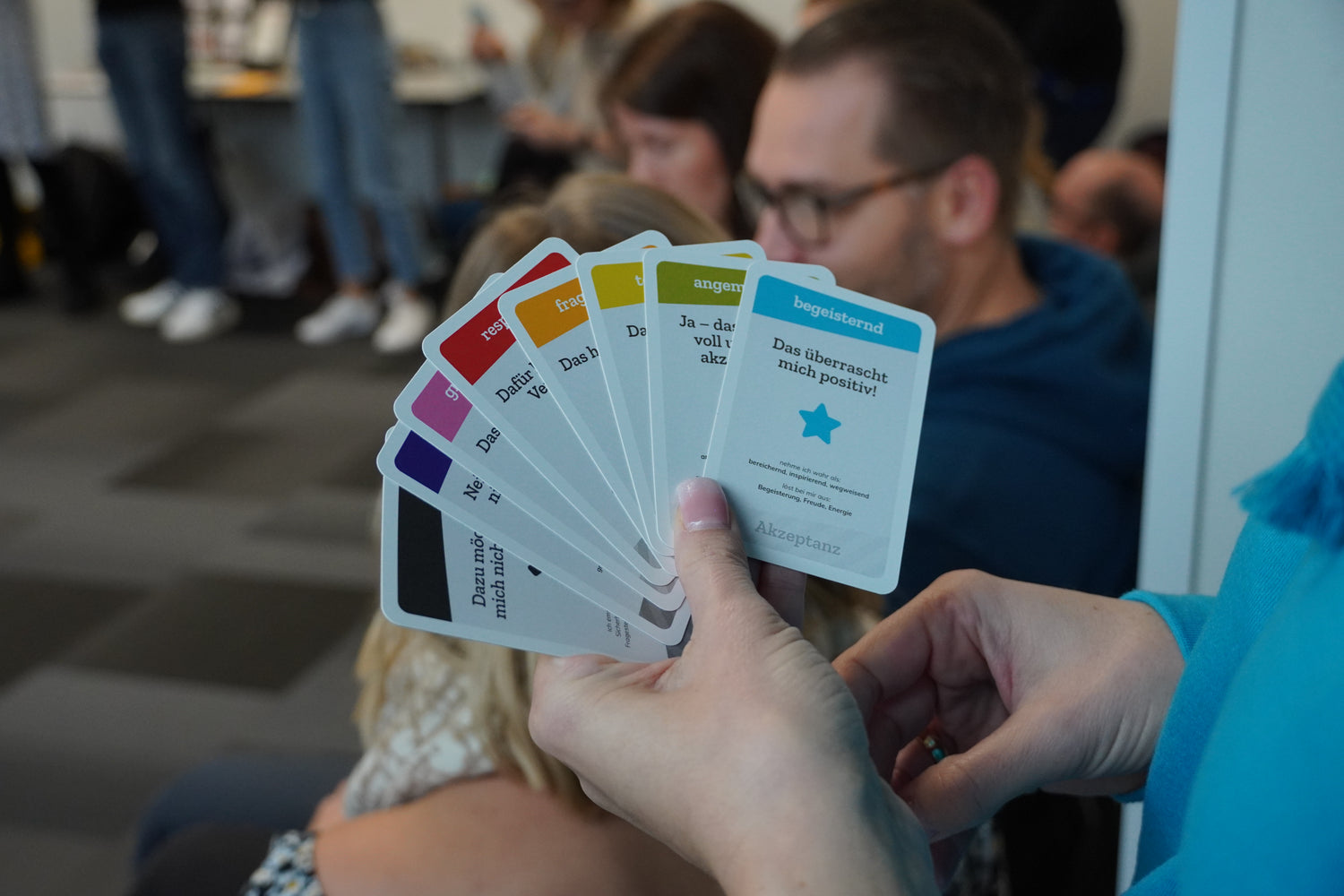
Game instructions
How to best use tolerance poker to help your team resolve conflicts.
The game idea
Tolerance Poker is designed to explore emotionally charged situations in human interactions, helping to better understand each other. Such situations can arise from external factors, but also from the behavior or views of participants in a group or team. Every behavior or expressed view will inevitably trigger emotional reactions in others.
Tolerance poker helps to share these emotions in order to strengthen understanding of action and reaction among each other.

What are scenarios?
We refer to scenarios as situations for which you want to assess your level of tolerance within your team or group. These can be exemplary or real situations that you have experienced as emotionally moving or that repeatedly lead to friction.
To help you get started, we've collected a few examples here. If you use your own scenarios, make sure to describe the situation clearly and in as few words as possible. Our example scenarios intentionally contain few details, allowing for room for interpretation. Each participant decides for themselves how to use this space when assessing the scenario.
In exchange, it helps mutual understanding greatly if everyone shares the assumptions that formed the basis for the decision.
Attention, human beings!
When using tolerance poker, please be aware that you are revealing the behavior, views, and emotions of others more than is usual in everyday life. This can trigger insults, hurt, or tension that can linger long after the game is over. Therefore, it is essential to create an atmosphere of psychological safety. This includes free consent from everyone, the use of defensive language, and a moderator who knows what they're doing and maintains a neutral position.
You can achieve defensive language by using I-messages, nonviolent communication (NVC), clean feedback and avoiding judgments about others (attitude of humility).

Game preparation
Everyone who wants to play receives a deck of eight cards. For a good group dynamic, sit or stand so everyone can see each other. It's best to gather around a table or make space in the middle of your group.
Appoint a moderator to guide you through the game. Ideally, this person won't participate. They'll maintain a neutral position and keep track of the situation. They'll ensure everyone understands the questions and has enough time to consider their answers.
Gameplay
The game lasts as many rounds as you consider appropriate for your context.
- At the beginning of each round, the moderator presents a scenario.
- All participants now select the card from their set that best reflects their own reaction to the presented scenario and place it face down in front of them.
- Now everyone reveals their cards at the same time.
- Individuals take turns sharing why they placed a particular value on a topic. Who and how many people speak is at the moderator's discretion.
Variant for anonymous voting
In step 3, the moderator collects the cards face down and places them face up together.
Enjoy!
We wish you success in using the game and good insights for you and your team.

Tolerance Poker Facilitation Training
Not quite sure how to use the game in your team or department? Perhaps you need some input on effective facilitation? Are you looking for support in developing scenarios?
Then our training is right for you. Check it out here.

Your tolerance poker set
Don't have your own copy of Tolerance Poker yet? Or do you need more because your team has grown or is already larger than six people?
Then get the right number of sets for your application area in the right language now.